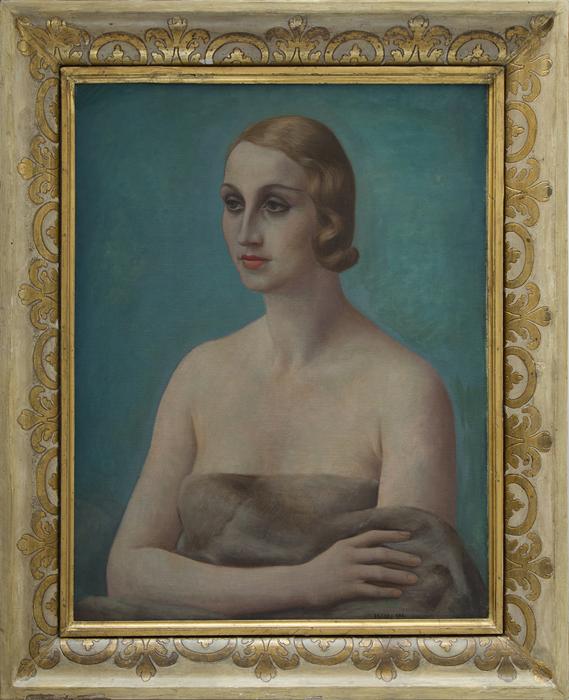Figura (La signora Ducrey), 1926-1927

Ubaldo Oppi (Bologna 1889 – Vicenza 1942)
Figura (La signora Ducrey)
oil on canvas
1926-1927
cm 73 x 58
Considered one of the great exponents of magical realism, Oppi portrayed his subjects immersed in a cool and enchanted vision of daily life, immersed within an ambiguous and timeless magical atmosphere.
The portrait of Signora Ducrey, while highlighting the tapered form of her cleavagein a pose of imperious aristocracy, is handled with an objective gaze, utilising a range of cold colours that highlight the unquestioned and seductive presence of psychological reality.
A passionate illustrator, in 1906 a young Oppi enrols at the Accademia di Nudo in Vienna, attracted by the Secession movement. There, he meets the director at the time, Klimt. He travels to eastern Europe, from Germany to Russia, then back to Paris, where he spends time with Severini. The latter, in turn, introduces him around Paris, where he meets Modigliani and Picasso. At the Louvre, he studies 15th-century Italian painting.
Starting in 1912, Oppi produces a series of nudes immersed in nature, in woods where the relationship between man and nature is represented through dance, and groups of men and women are in evident harmony with each other and with their environment. After this, the artist focuses his attention on contemplative subjects that ponder the misery of human life: the simplicity and essential nature of the representation are prominent elements. This cycle is dominated by the melancholic eyes and gestures of subjects with pale and emaciated bodies. The female figures, many of whom can likely be traced back to the model Fernande Olivier (Picasso’s mistress who left him when she fell in love with Ubaldo), have bistre eyes, clouded with sadness. From 1913-1914, the dominant theme becomes a world of poverty, the marginalised, lonesome and sorrowful figures who openly display their sense of oppression and resignation.
With the end of the war comes Oppi’s second period of great success. The pauperism of the first period is softened by 1919: a new serenity permeates his paintings when he meets Adele Leoni, aka Dhely, whom he would marry in 1921; her name often appears in the artist’s paintings.
The couple move to Milan, but his paintings are by now of global stature.
In 1922, Oppi is among the seven founders of the Novecento Italiano [“Italian 20th Century”] which forms around the art critic Margherita Sarfatti. Oppi’s fame increases in Italy and abroad.
His final distinct period begins in 1932 and coincides with his retreat to Vicenza, sparked by a spiritual crisis that brings Oppi closer to religious art. This marks the definitive return of the painter to the classical spirit.
